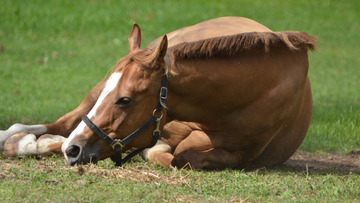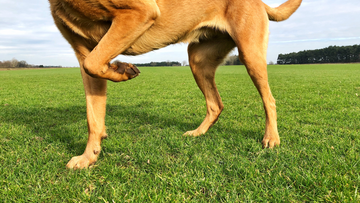Separation anxiety in dogs is frantic, distressed, and often destructive behaviors associated with separation from their pet parents. It can still qualify even if these actions only last for a few minutes. Pet parents often mistake separation anxiety for disobedience or spite. Dogs are distressed and upset because of their parent’s absence. By nature, dogs are social animals; they don’t like being alone.

Many dogs who are in stable, structured homes most likely will never suffer from separation anxiety, even if their people go off to work every day. On some days however, separation anxiety might be triggered if there’s a change in a dog’s routine or the family’s daily life.
Separation Anxiety is most commonly seen in dogs that have been abandoned young and then rescued from a shelter or the street. Pups that that leave their mother earlier than 8 weeks of age are all more likely to develop the problem. Older dogs may develop Separation Anxiety when household circumstances drastically change, such as children leaving for college, or a new work schedule that leaves the dog alone more often.
Signs of Anxiety:
- Cries when you leave
- Refuses to eat
- Soils
- Destroys property
- Seeks to escape
- Pacing
- Excessive salivating
- Vomiting
Some of the most common factors for anxiety:
- Being returned to a shelter after an initial adoption
- Changes in the family make up such as a death, birth, or a child going off to college
- Major changes in a family routine
- Puppy-hood trauma
Some tips to help:
- Pick up your keys, but don’t leave.
- Put your coat on or open the door a dozen times but then stay inside.
- Make sure the dog gets a lot of exercise before you leave and after you get home.
- Soothing music can help calm anxiety.
- PetSide also recommends giving them puzzle toys filled with tasty treats and hide them around the house.
- No touch, no talk, no eye contact before leaving.
- When you get home, ignore your dog until he or she calms down.
- Do not allow your dog to sleep in your bed.
Take steps to prevent separation anxiety in your new dog by conditioning him to accept being left alone. Assess your dog's anxious behaviors (destructive behavior, vocalization, and inappropriate elimination) to determine if the behaviors might have a cause other than separation anxiety. Understand that your dog's difficult behavior is not deliberate, and that punishment is unsuccessful, inappropriate, and will only worsen the behavior.
A trip to the veterinarian to check your dog’s health is always recommended if your dog’s behavior suddenly changes. Your vet can decide whether your dog’s problem is truly separation anxiety. The above symptoms could be a sign of a medical problem.
The Benefab® Therapeutic Comfort Shirt is designed to reduce anxiety. The fabric emits far-infrared rays, keeping muscles, joints, tendons, and ligaments supple and relaxed. The shirt provides supportive compression for anxiety and comfort. It helps harmonize bodily functions safely and naturally stimulating recovery time, promoting blood circulation, increasing oxygen flow, and ultimately reducing pain and stiffness. Material is also breathable with wicking qualities.





















